In a world where reality meets fantasy, artist Rosie Tretter invites us into a realm where the ethereal and the urgent dance together on the canvas. In an exclusive interview with House of Coco magazine, Rosie shares the profound inspiration behind her captivating artworks, offering a glimpse into her transformative journey from a childhood hobby to a professional artist.
As Rosie prepares for her upcoming solo exhibition and participation in an art fair in Stuttgart, Germany, House of Coco is thrilled to bring you an intimate look into the mind and heart of an artist whose work goes beyond the canvas, resonating with a call to protect our planet.
Join us on this visual and intellectual journey with Rosie Tretter – an artist whose brushstrokes illuminate the intricate tapestry of nature’s beauty, encouraging us all to become stewards of our paradise…
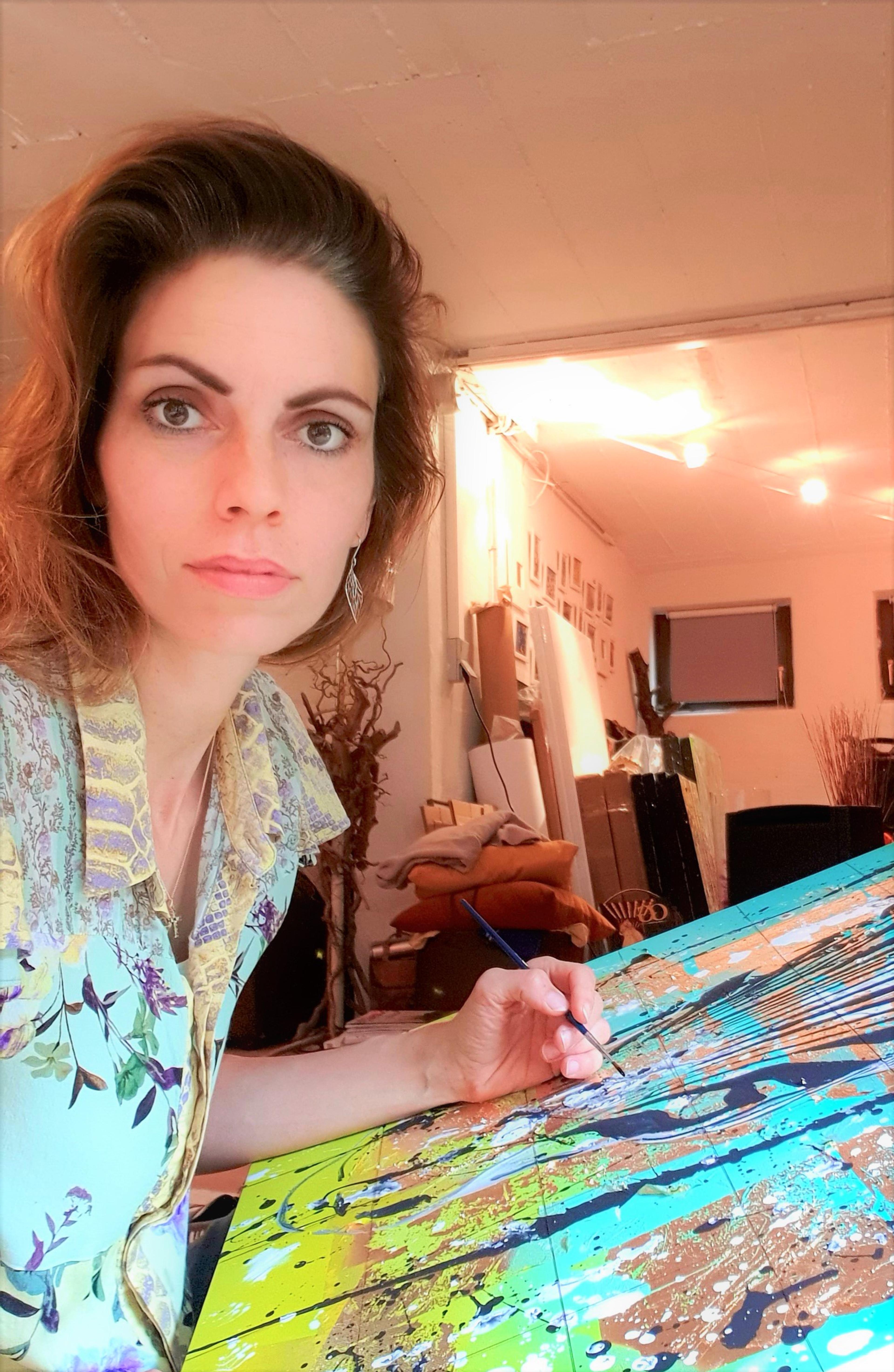
Your perspective on art as a form of freedom, where reality and fantasy merge into a new world, is truly inspiring. Could you share a specific moment in your artistic journey when you felt the most liberated, breaking free from conventional constraints and rules?
A decisive moment in my artistic journey was when I began incorporating colourful backgrounds into my paintings of landscapes and animals. Previously, I painted in a very realistic and nature-inspired style.
However, I decided to experiment with unconventional colors, questioning whether the world truly looks the way we perceive it. Who dictates that we all see colours in the same way? Who determines how we should perceive things?
Nature seems to play a significant role in your work. Could you describe a particular encounter with wildlife or a natural landscape during your time in Namibia that left a lasting impression and later found its way into one of your artworks?
Namibia is overwhelming from the moment you step off the plane. One of my initial impressions, as I looked down from the terrace of the hotel after my first night, was the entire city of Windhoek adorned in a vibrant purple. Hundreds of jacaranda trees created a fairy-tale-like scene.
An unforgettable encounter was the first time I came face to face with a lion. About two meters away from our safari car, the lion lay relaxed on a small hill, observing us with a blend of serenity and strength. I aim to capture this natural power in every big cat portrait I paint.
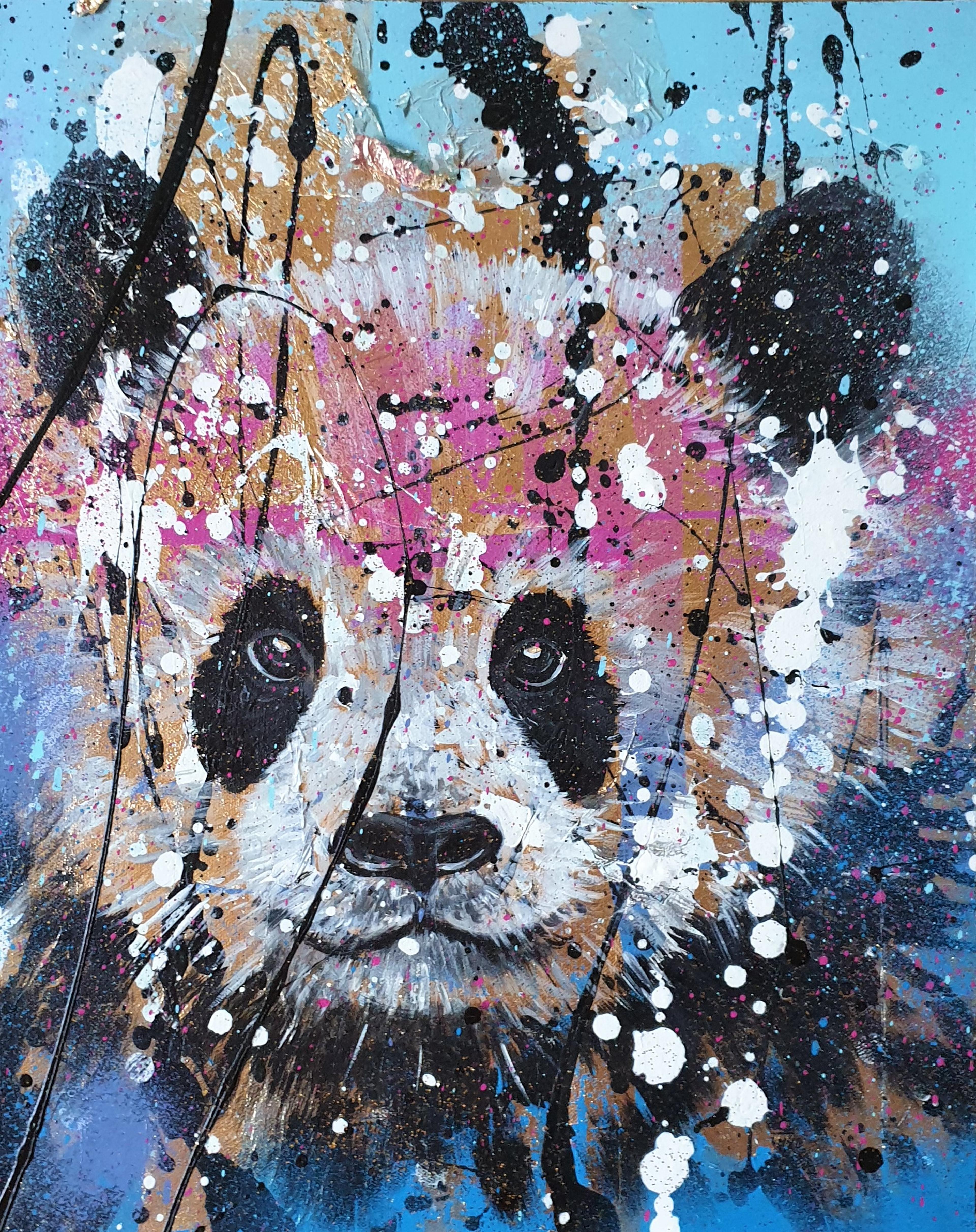
Your travels as a flight attendant exposed you to diverse cultures and people. How have these global experiences influenced your artistic style and the themes you explore in your paintings?
Observing our planet from a few kilometres above, you gain an understanding of the natural masterpiece we inhabit, despite its apparent fragility. This sparked my desire to bring that beauty onto canvas. During my time as a flight attendant, I was struck by the abundance of colors in many places and cultures.
For instance, in South Africa, despite high poverty levels, people were brightly dressed, expressing a tireless joy of life. This vibrant cultural expression in even the poorest places left a lasting impression on me.
Acrylic paints, spray, gold leaf, varnishes, and diamond dust – your choice of mediums is intriguing. How do these materials contribute to the emotions and messages you want to convey through your art?
I love using a variety of colors for the background to showcase the variability, beauty, and happiness of our world. The scenes themselves are painted in black and white, akin to photos of the deceased, to symbolise the disappearing animals and landscapes. Gold and diamond dust contribute to the nobility of my subjects, emphasising that everything ultimately turns to dust.
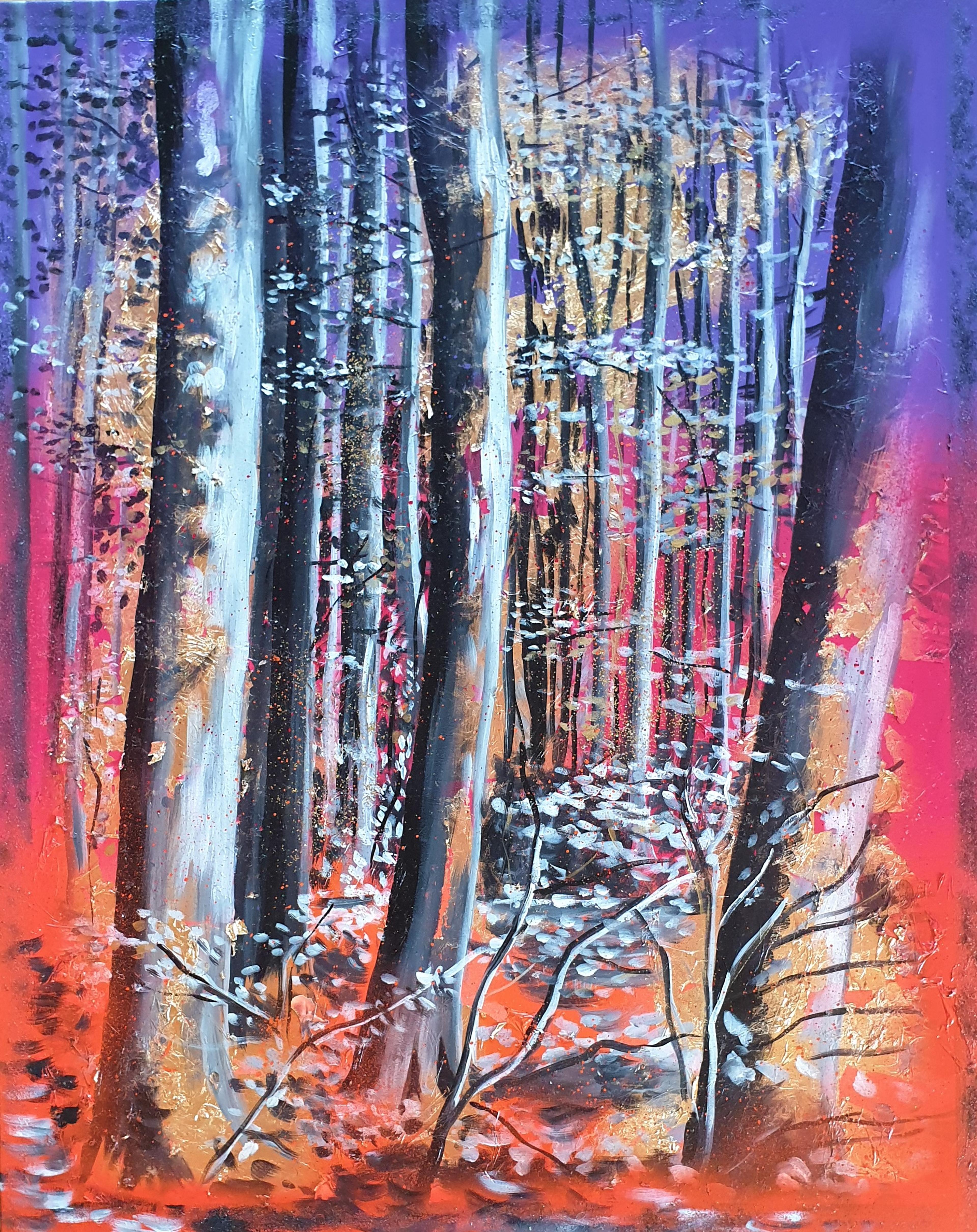
Nature is your muse, and you aim to capture its beauty and transience in your paintings. Are there specific natural elements or creatures that you find particularly challenging yet rewarding to depict on canvas? If so, why?
I aspire to paint “unpopular” or forgotten creatures like insects or reptiles, often extinct before we get to know them. Presenting these small creatures on canvas, portraying them from a beautiful perspective, is challenging, as insects, for example, are not commonly considered attractive.
It’s a unique challenge to make people appreciate the beauty of these overlooked creatures.
The idea of using art to raise awareness and motivate people to protect our environment is powerful. How do you hope your art will inspire viewers to take action in preserving nature and wildlife?
I hope to kindle a desire in people to contribute a portion of their wealth to projects dedicated to endangered animals and nature. By redirecting funds from unnecessary expenditures, we can make a significant impact.
Imagine a world without elephants or tigers in the wild, without glaciers and rainforests – a thought that should stir sadness. I want our future generations to question why certain species vanished during our time.
Balancing the ethereal nature of your art with the harsh realities of environmental conservation can be complex. How do you strike a balance between portraying the beauty of nature and addressing urgent issues such as climate change and biodiversity loss in your work?
The human desire to protect something may be stronger when it’s visually beautiful. Devastating images on TV evoke anger, but they are often forgotten. I choose to focus on the beauty of nature, hoping to make conservation more appealing and encourage action.
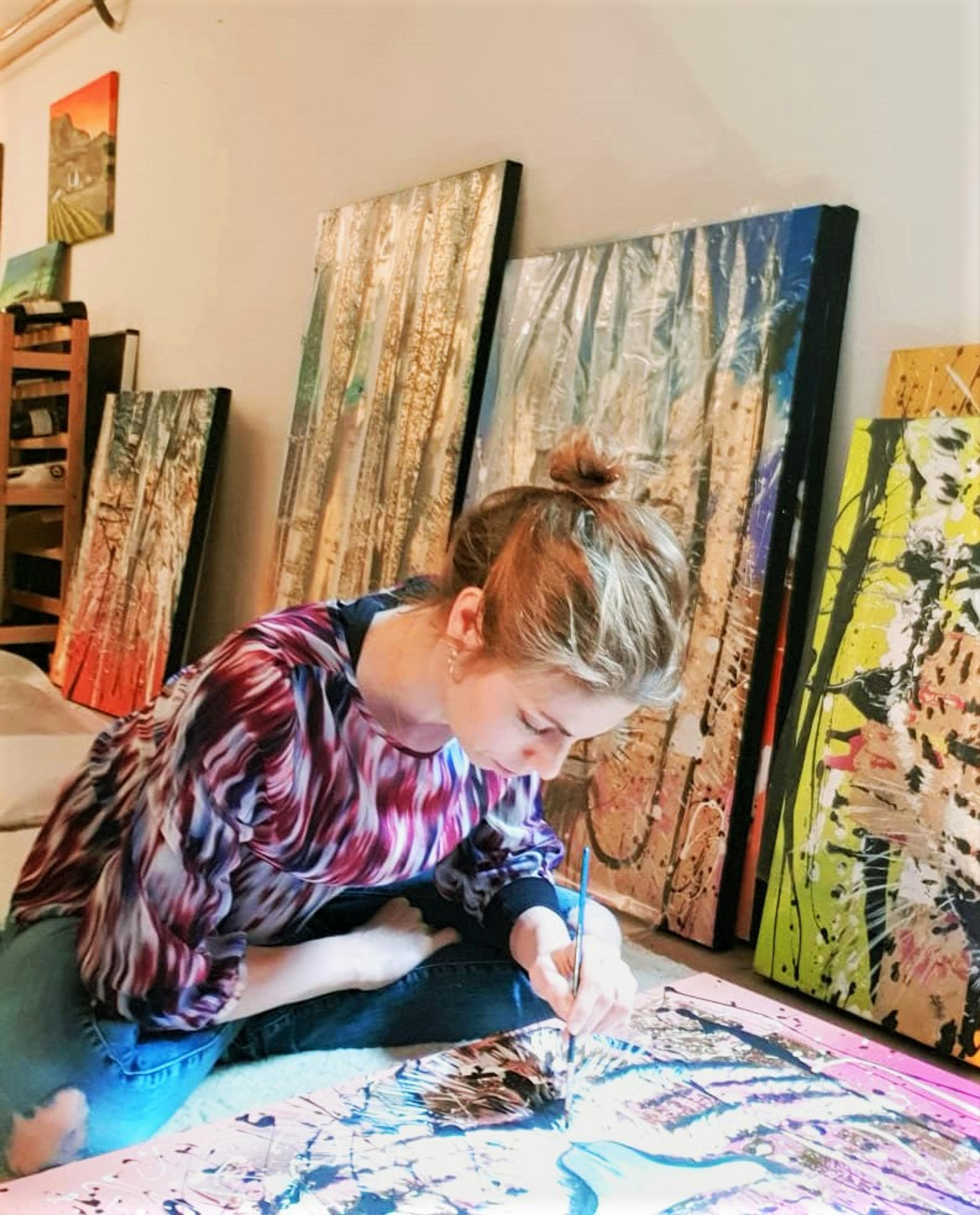
Gold leaf, a material often associated with luxury, juxtaposed with the rawness of nature in your paintings creates a unique contrast. What message or symbolism do you intend to convey through this combination of elements?
I aim to convey that the only true luxury we possess is an intact nature. Gold, historically associated with the eternal and infinite, symbolizes the preservation of creatures or landscapes, at least on canvas.
The concept of capturing the uniqueness and transience of nature before it disappears forever is poignant. Can you share a specific artwork where you feel you successfully encapsulated this idea, and what was the inspiration behind it?
When I painted “Acinonyx jubatus,” a portrait of a cheetah, I deeply felt the plight of this endangered big cat, representing many others. The painting, predominantly in black, gives the impression of almost being lost without a trace.
The eyes express a mix of sadness and anger, mirroring my emotions during the painting process. With only about 7,000 cheetahs left worldwide, the artwork serves as a poignant reminder of their precarious existence.
Your journey from a childhood hobby to a professional artist is inspiring. What advice would you give to aspiring artists who are passionate about pursuing their artistic dreams, especially those who, like you, are self-taught?
Never give up on your passion, regardless of what others may say. Invest all your energy and power into your creative career. Don’t halt your artistic journey, and make every effort to showcase your work publicly.
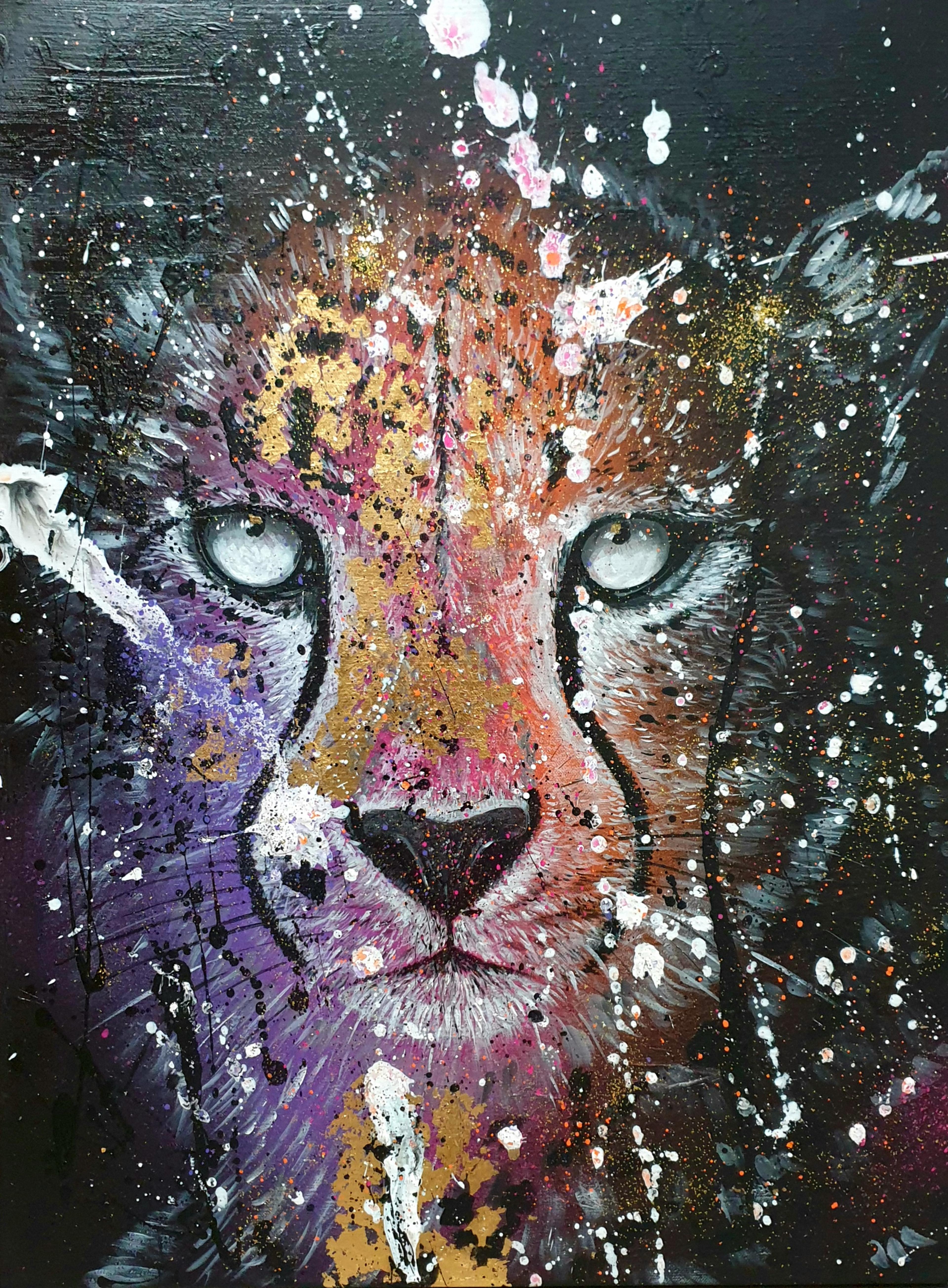
Your artistic process, involving constant self-study and experimentation with different techniques, reflects dedication and curiosity. Are there any new techniques or materials you’re currently exploring that excite you and might influence your future creations?
I am considering working with more natural materials, such as bringing dead wood and tree trunks back to life as works of art. Additionally, I am experimenting with painting on photographs, creating a blend of reality and fantasy.
The intersection of art and environmental advocacy is a powerful force for change. Are there any environmental organisations or causes you are particularly passionate about, and do you collaborate with them in your art projects?
Since my youth, I have been interested in wildlife and support the WWF with regular donations. After experiencing the impactful work of the Cheetah Conservation Fund (CCF) in Namibia, I also contribute to the German organisation AGA, which supports the CCF. I am eager to collaborate with them artistically in the future.
Nature’s beauty often evokes a sense of wonder and awe. Can you recall a specific moment in your life when you felt deeply connected to nature, and how did that connection inspire your art?
There are countless moments when nature captivates me, whether it’s a unique sunset or a walk through a forest in summer rain. One particularly special moment was witnessing the sunrise in the Namibian desert, Sossusvlei.
The entire landscape transformed into various shades of red, almost like being part of the first day of our planet. It was a moment of profound connection to the earth and sand, realising the interdependence of everything. Creative endeavours, like music, photography, or painting, aim to connect people in similar ways.
Your statement about focusing on the beauty of nature to motivate people to protect our paradise is profound. How do you think art, in general, can contribute to a broader shift in societal attitudes and behaviours towards environmental conservation?
Art serves as a potent communicator of essential messages. A picture or artwork can convey what words often cannot. The language of images is crucial in signaling important statements without personal blame. Art has the power to provoke thought and inspire change.
Looking ahead, what are your aspirations as an artist? Are there specific projects, exhibitions, or collaborations on the horizon that you are excited about and would like to share with our readers?
I will showcase my artworks at an art fair in Stuttgart, Germany next April, and I am planning my first solo exhibition. Additionally, I am eagerly anticipating the events the coming year will bring.
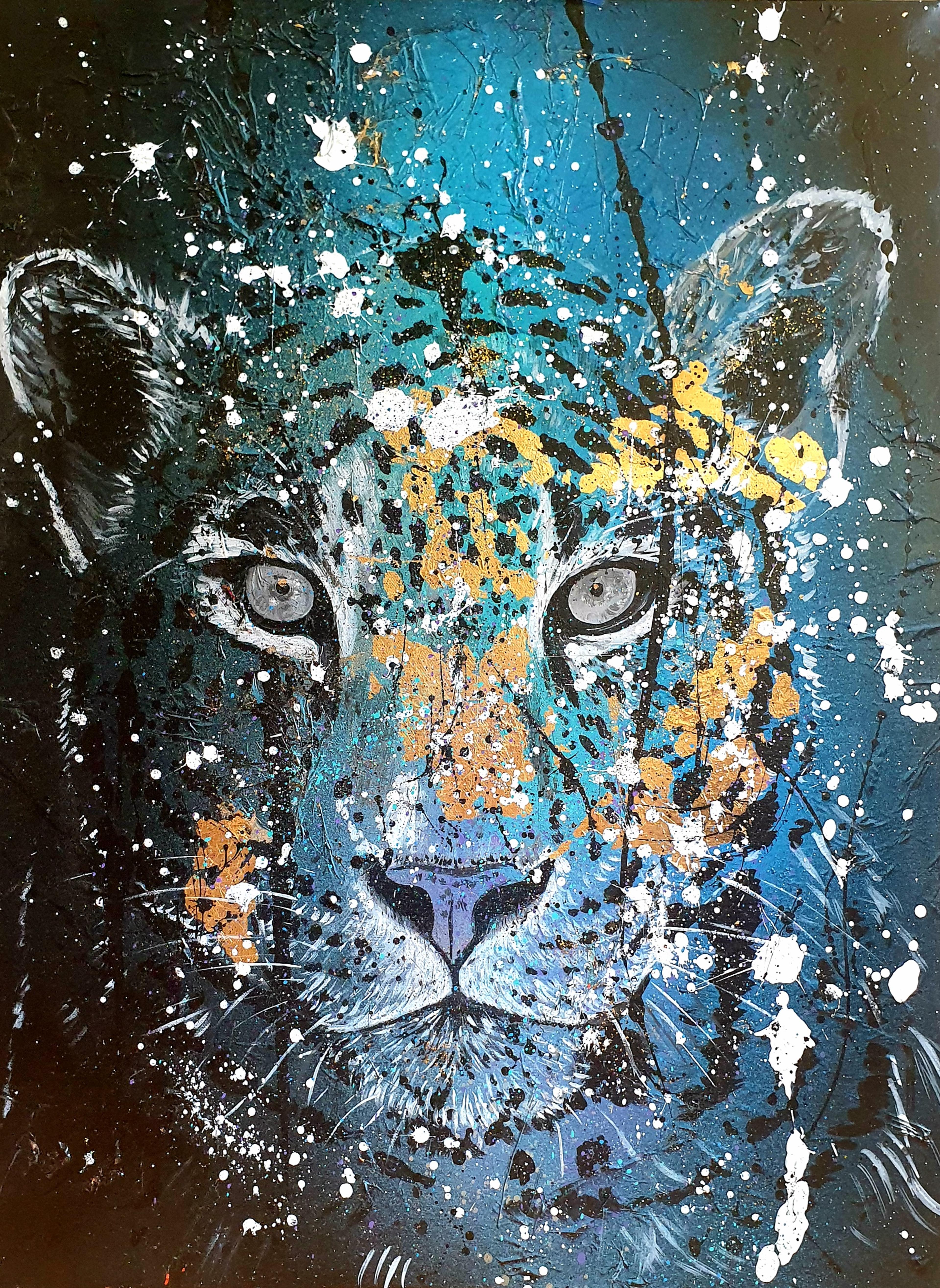
If you hadn’t pursued this career, what else would you have done?
If I hadn’t pursued my artistic career, I likely would have become a wildlife ranger in southern Africa, guiding people through the bush and enjoying incomprehensible sunsets with a glass of “Savannah Dry” every evening.
Our readers love to travel. What destination is at the top of your bucket list?
It’s challenging to pick just one destination, but Costa Rica is among my favorites. With its plethora of endemic plant and animal species and diverse ecosystems, Costa Rica boasts one of the highest biodiversities on our planet. Encountering a jaguar or puma in the rainforest would be a life-changing highlight!
Where can people follow you and find out more?
You can follow me on Instagram @rosietretter.art, as well as on my homepage www.rosie-tretter.com. Additionally, my work is available on the online galleries “saatchiart” and “artmajeur.”


Comments are closed.